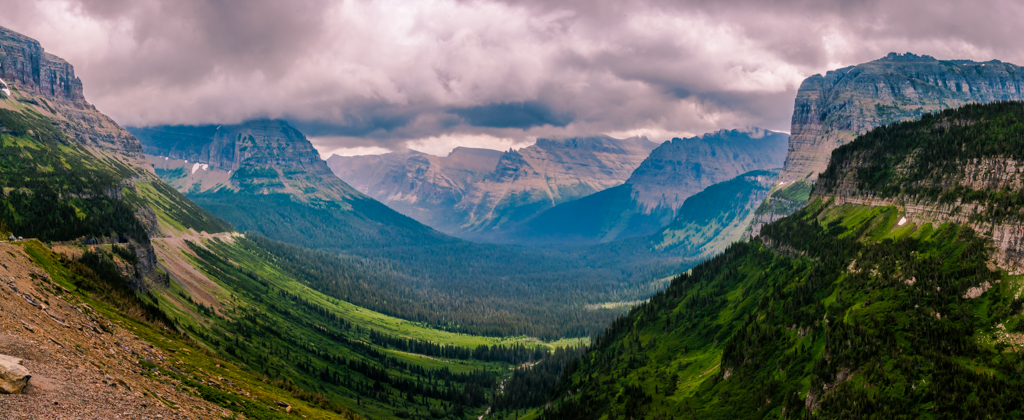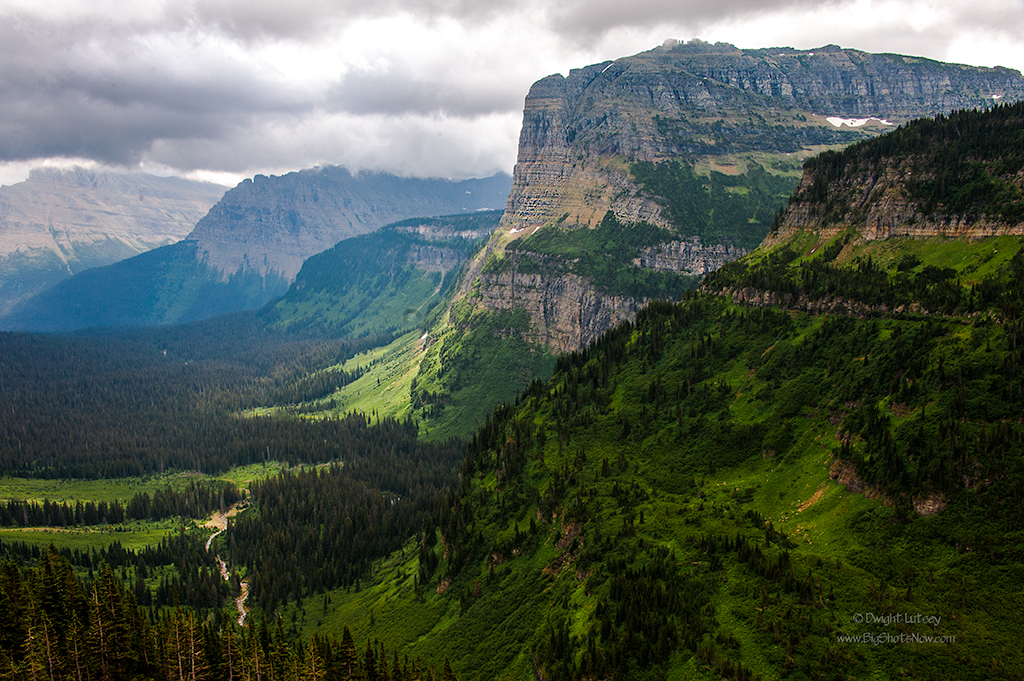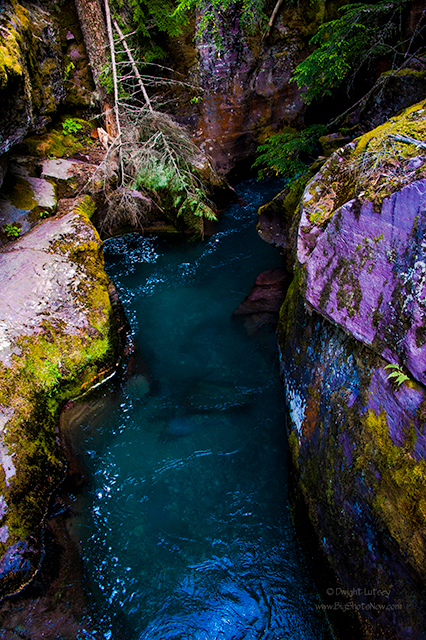 click to enlarge © Dwight Lutsey
click to enlarge © Dwight Lutsey
Since we are waiting for the 8000+ images taken of the North American Indian Days event to come out of The Institutes proprietary image developer. The one we had constructed under the auspices of our own Hardware Development Group (TI-HDG) and specially built to handle large jobs by a triumvirate of IBM, Apple, and ACME Pixel Burner and Screendoor factory to finish the initial processing, we thought we would share another shot from Glacier National Park.
This is a 14 image panorama stitched together in Photoshop under a license with Adobe systems and The Institute, which has been carefully monitored by our own staff of panorama techno nerds using our own casually leased monitors throughout the process. At the risk of boring you stupid with the technical details we realize that are at least three of you out there that actually care about this technical stuff, so we decided to share the details to enlighten the unenlightened and to fill up page space as we don’t have a lot to say about this image otherwise.
The original images were taken with a professional digital camera set to stun and the resulting pixels were ported to The Institutes own diesel-powered mainframe computer where they were checked for robustness and cohesiveness before being divvied up into equal quantities and parceled out to the 14 techs used for the initial joining process.
l
The next step is the labor intensive part of the procedure where the individual techs who have each been given the amount of pixels to complete one image, lay out the pixels one by one in numerical order on a large clean white piece of poster board. When one image is fully laid out the next tech steps up and begins to lay out his pixels adjacent to the first image so that the pixels touch at the long edge of the orientation. Then a specially formulated glue developed by The Institute and the Amalgamated Glue Workers Union under the watchful eye of NASA, because this is Space like science we’re working with here, and each individual pixel is glued to its matching neighbor on the other image until the two images edges are joined. This entire procedure is then repeated until all 14 images are joined into the one big image you see on the screen today.
The resulting panorama must be left on the poster board for at least 3½ hours for the glue to set and another 5 days for it cure properly so that the images do not separate when you lift them off the paper. At this point the utmost caution is required as the image has the consistency of a freshly molded sheet of very thin jello. This is the hard part. The waiting, because you really want to pick up the image and hold it up to the light to see what it looks like. But just like a fine wine, no image can be picked up before its time, otherwise it will fall apart and you have to start all over again. There is nothing more discouraging than to see the thousands upon thousands of pixels drip off the page and gather together like beads of mercury to fall off the table and scatter to the edges of the room. Grown men have cried at this sight.
Usually the whole process is worth the time and expense, not to mention the nerd power tied up in the project, but it still must be used sparingly. You don’t want to waste this on taking a panorama of your sock drawer. This is the valley seen from the Going To The Sun highway just before you get to the visitors center, and it carries Reynolds creek downstream toward Heavy Runner mountain way off in the background there. Now you could have taken this image as one shot with your smart phone, without going through the panorama business, but had you done so everything in the picture would be itty-bitty scrunched up, tiny little pixels and you wouldn’t have been able to see nothing. Just a bad picture, even though your friends would probably say it was beautiful, trust me, it isn’t. They just say that because they’re your friends and they like you.
OK then, we expect to have images popping out the developer soon so we can begin posting them for you to see everything that happened at the North American Indian Days celebration. Hang in there.




You must be logged in to post a comment.